Remembering Newcastle University during the Great War
Ahead of Armistice Day, we look back at how our campus changed during the First World War and the impact the conflict had on our university community.
9 November 2025
This Remembrance Day, we look back through the university archives and reflect on the impact the First World War had on our campus and community.
When Great Britain declared war on Germany in August 1914, Newcastle University was known as Armstrong College and the College of Medicine, both part of Durham University. It wasn’t until 1963 that the Newcastle campus broke away from Durham and officially became the University of Newcastle upon Tyne.
Campus takeover by the War Office
During the Great War, Armstrong College – the predecessor to Newcastle University – was requisitioned by the War Office to form the 1st Northern General Hospital.
The Armstrong Building – the heart of our campus where thousands of students graduate each year – along with the King Edward VII School of Art (now the Hatton Gallery) and the Agriculture Building (now our School of Architecture) were transformed into hospital wards serving over 41,000 patients in five years. Students who remained at the university during the conflict were instead taught in buildings across the city, including the Quaker Meeting House in Pilgrim Street and the Lit and Phil Library, with teaching not returning to campus until October 1919.
When soldiers were well enough, they could be seen relaxing in the university grounds, reading, and undertaking handicrafts such as lace work and embroidery. The Northumberland Handicrafts Guild provided classes to the wounded soldiers on campus, which led to ten exhibitions with prizes over the course of the war. The majority of these exhibitions were held in King’s Hall in the Armstrong Building, the same room where today approximately 10,000 students graduate each year.
When venturing outside the walls of the hospital, patients wore distinctive pale blue flannel suits and red ties to identify them as wounded personnel. A stigma existed for men of military age remaining at home as accusations of cowardice would often arise.
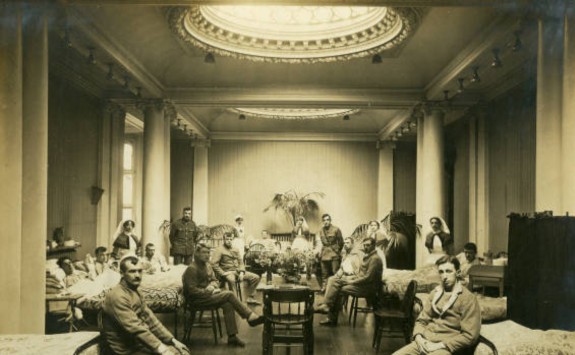
Alumni stories from World War I
Approximately 1,521 people who studied at or taught at Armstrong College and the College of Medicine served in the First World War, with at least 275 of these making the ultimate sacrifice and dying in service. These are just some of the experiences of our alumni during the war:
2nd Lieutenant John Halifax Feggetter, who served with the Northumberland Fusiliers, was commissioned at the age of 20 while a student at Armstrong College and was injured at the Battle of the Somme in 1916. The following year he was made a Signalling and Intelligence Officer and was awarded the Military Cross “for gallantry and devotion to duty on April 2nd 1917, near Croisilles, when by his skill and fearlessness he established telephonic communication between the front line and Battalion Headquarters within a few minutes of the capture of an important objective." He was killed in action in October 1917 aged just 22.
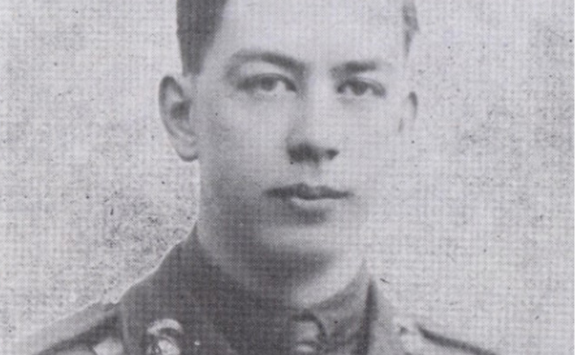
Ruth Nicholson was a Newcastle University medical graduate who offered her services as a surgeon to the War Office but was rejected for being a woman. Undeterred, she joined Dr Elsie Inglis of the Scottish Women’s Hospitals and helped to set up a military hospital under the French Red Cross in an abandoned abbey at Royaumont, 20 miles north of Paris. Staffed entirely by women, Royaumont was the largest continuously-operating voluntary hospital in France and had treated more than 10,000 patients by the end of the war.
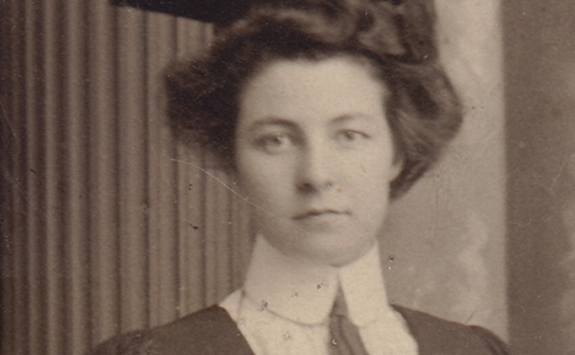
Just a month after arriving in France with the Northumbrian Royal Engineers 1st Field Company, Captain Henry Clifford Stroud was severely injured in both legs and returned to Armstrong College, which had then become the First Northern General Hospital, to recover. Henry was unable to resume active field work due to the nature of his injuries but instead joined the Royal Flying Corps having qualified for his wings, quickly becoming an expert flier for the defence of London at Rochford Aerodrome. He was engaged in repelling practically every German air raid on the capital until the penultimate raid and was killed flying in March 1918 when his aircraft collided with another while both attempting to intercept a German raider.
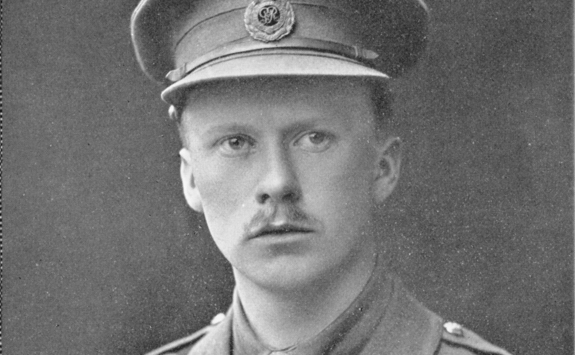
Professor Frederick Charles Pybus was a surgeon and alumnus of the Durham College of Medicine, another forerunner of Newcastle University, graduating in 1905. He joined the First Northern General Hospital shortly after its formation, serving as its registrar and as a surgeon. Following the war, Professor Pybus enjoyed a distinguished medical career as a surgeon and cancer researcher in the Royal Victoria Infirmary in Newcastle, and he returned to campus in 1941 as he was appointed a Professor of Surgery. Upon his death, Professor Pybus’s medical books were donated to the university library, where they remain as valuable resources for medical historians.
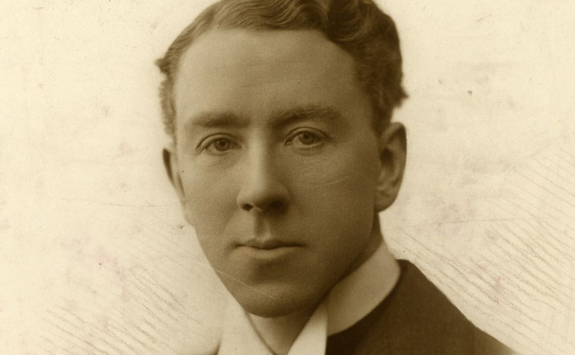
A roll of service is available to view in the university archives, listing the 2,464 casualties from Durham University (including those taught at the Newcastle colleges). The document includes basic details on rank and regiments, honours and decorations, where they served, and where relevant if they were wounded or killed in action.
Despite being a useful source, it is only a partial record. 64 of the fallen on the Armstrong Memorial are not included in the Roll of Service and several anomalies, like misspellings of names, exist between the two.
Remembering the fallen
The war was covered extensively in the student newspaper at the time, with obituaries of fallen students and colleagues announced in The Medical Gazette. This included Major W. T. Sewell, Lecturer in Pathology and President of the Medical Society on campus, who died in action during the Battle of the Somme, and student Thomas A. Peel, who regularly contributed poems to the College Gazette and played rugby for the university.
In 1923, four years after the end of the war, a plaque was unveiled on campus in the Armstrong Building honouring the lives of students who died during the conflict. Those honoured had come to Newcastle from as far afield as Canada and Australia. Unveiled by Sir David Drummond CBE, who served as warden and vice-chancellor of the University of Durham and had also been president of the College of Medicine in Newcastle, the plaque still has pride of place on campus today.
Newspaper accounts reporting on the unveiling of the Armstrong Memorial revealed that 106 Armstrong soldiers, or around 16%, were wounded. This meant nearly half of those who served from Armstrong College alone were either killed or wounded during the First World War. 97 were mentioned in dispatches and a total of 225 honours were won for bravery.
Today, an annual remembrance service is held in November in the Quadrangle Memorial Garden, which was first unveiled in 1949 in memory of members of Newcastle University who gave their lives in both the First and Second World Wars.
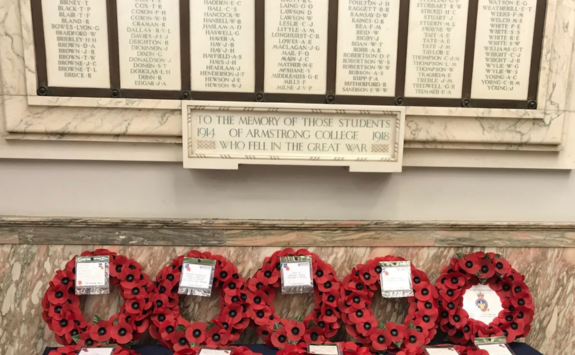
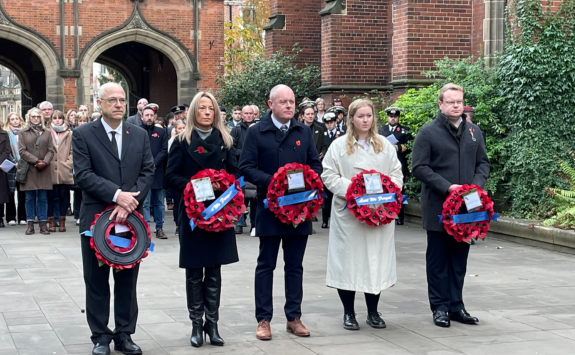
With thanks
Much of the information shared in this article was uncovered in the 2018 Universities at War project, a collaboration between Newcastle and Durham University which was funded by the Heritage Lottery Fund. Universities at War revealed the lost stories of 200 Armstrong College staff and students who fought and died in the Great War. Their stories have now been honoured in an online memory book for future generations.
